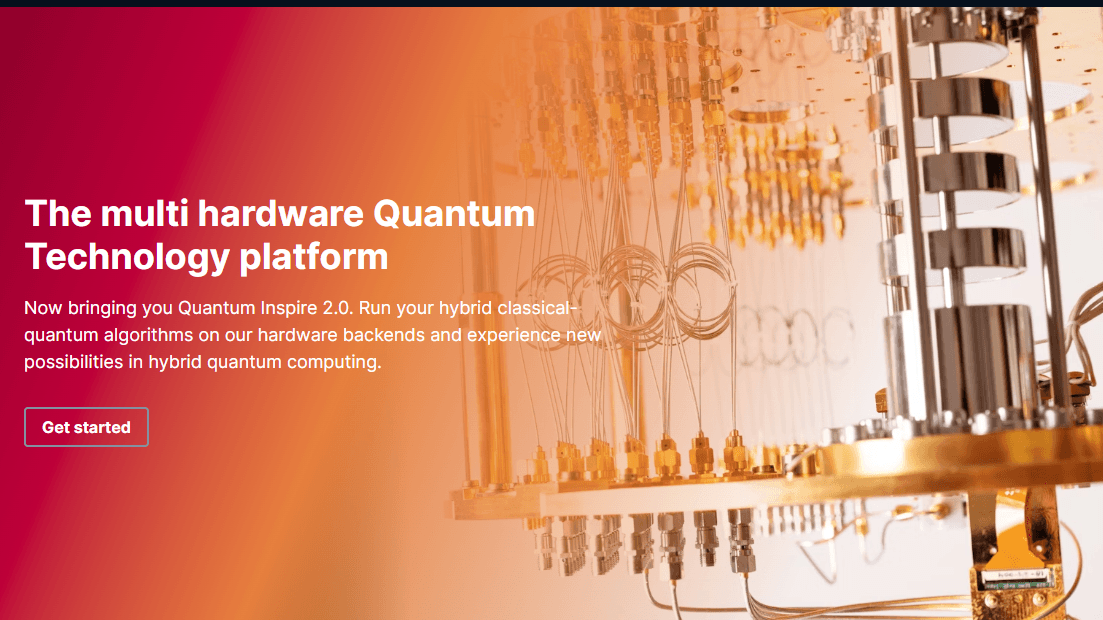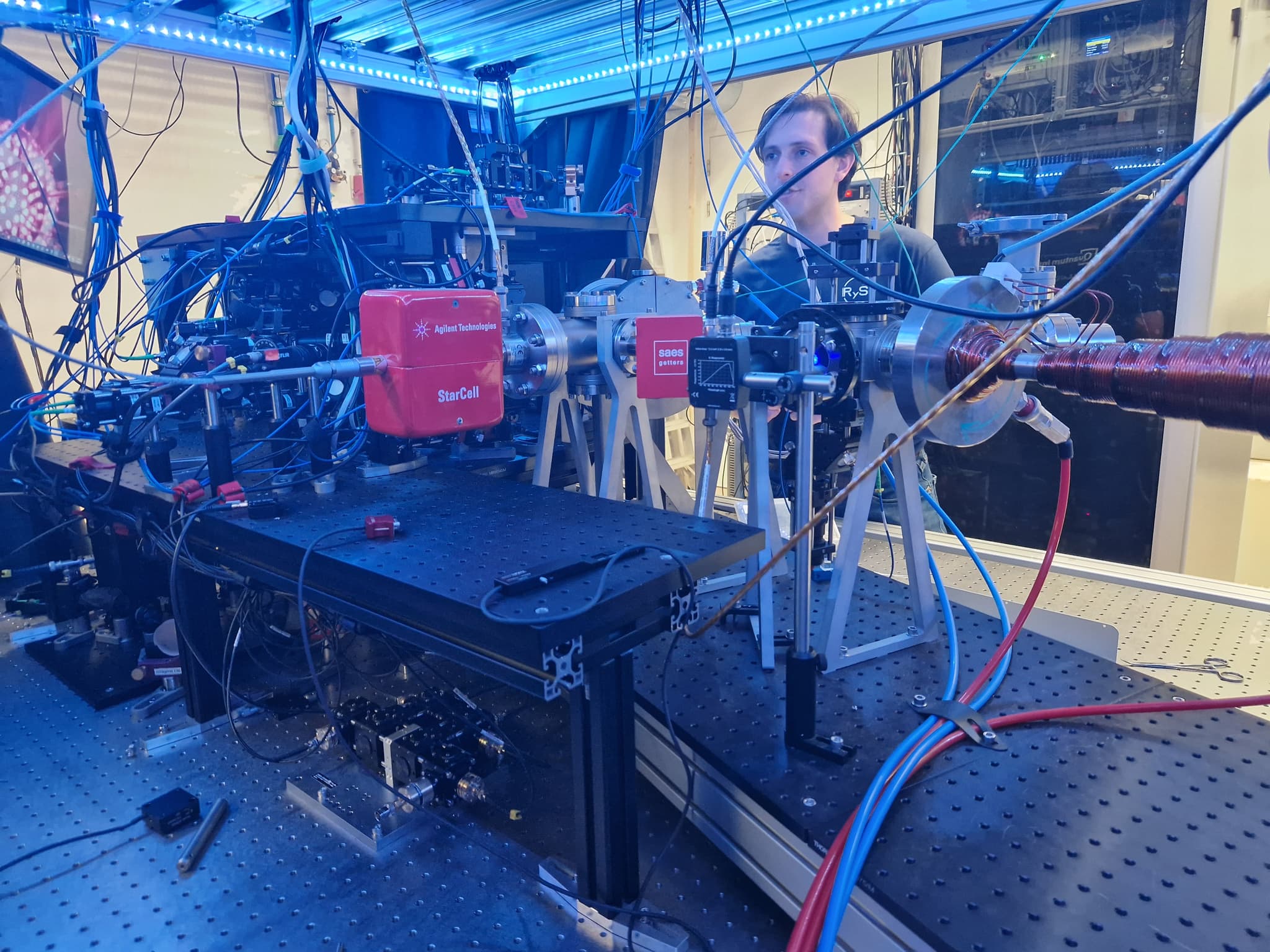First TU/e quantum computer emulator goes live
Rysp is a digital replica with the same computing capabilities as the university's actual quantum computer.
Published on June 11, 2025

Mauro swapped Sardinia for Eindhoven and has been an IO+ editor for 3 years. As a GREEN+ expert, he covers the energy transition with data-driven stories.
Yesterday afternoon, the Eindhoven University of Technology (TU/e) quantum computer emulator went online. Called Behind this sophistication lies the possibility of untapping computational power previously unavailable.. It is the university’s first quantum computer emulator going live. The milestone was celebrated with an opening event held at TU/e’s Qubit building.
This endeavor is a collaborative effort, under the umbrella of Quantum Delta NL, a government-funded initiative to create a quantum computing industry in the Netherlands. Rysp is online via the Quantum Inspire (QI) platform. QI is designed and built by the Delft University of Technology (TU Delft)’s QuTech, a dedicated research institute. Users can log into the system, test its capabilities, and provide feedback to the researchers.
Step forward
“This is a very important stepping stone for us and a first step in further developing the technology,” said Servaas Kokkelmans, quantum physicist and co-founder of the Eindhoven Hendrik Casimir Institute (EHCI). The EHCI is a university institute that combines research in photonics and quantum technology.
As in many other examples of digital twins, this replica is used to run simulations. Having a platform at hand to experiment with is particularly useful in the field of quantum computing, given the high costs of hardware. Entry-level systems, having a 1 to 50 qubit computing capability, can cost up to $2 million.
The professor emphasizes that Rysp also serves an educational purpose. “On the platform, users can move from the fundamental concepts of quantum computing to running more complex simulations.” On the website, it is possible to select to run a circuit of known computing problems, such as the fixed set instrument problem.
How does a quantum computer work
A quantum computer uses the principles of quantum mechanics to process information. While traditional computers leverage bits (having a value of either 0 or 1), quantum computers use qubits, which can represent 0, 1, or both at the same time, thanks to their superposition property. This allows quantum computers to be compelling in solving complex computing problems, such as factoring large numbers, simulating molecules, and optimizing systems.
Ruby and Sapphire
TU/e’s quantum computing infrastructure leverages neutral-atom quantum computing. This computing method employs individual, electrically neutral atoms as qubits (quantum bits) to perform computations. Neutral-atom computers use alkali atoms.
In the case of the TU/e hardware, there are two quantum computing systems: Ruby uses rubidium (Rb) atoms, while Sapphire relies on strontium (Sr) atoms. The former traps atoms using a blue laser beam, while the latter uses a red one. Ruby has a 50-qubit computing capability.
During the event, visitors had the opportunity to see the two quantum computers in person, gaining a deeper understanding of the technology's complexity. An optical tweezer, created using a laser, holds the atoms in place in the quantum computer. At the same time, a vacuum chamber constrains atoms in such a way that nearly no molecules are contained, and heat cannot pass through this chamber. In this chamber, atoms are cooled to 4 microkelvin, or four millionths of a kelvin (approximately 0.0000004 °C). To read and write data using qubits, lasers are used to ‘trap’ the atoms. Behind this sophistication lies the possibility of untapping computational power previously unavailable.

The Sapphire quantum computer - © IO+
The role of Quantum Delta NL
Having Ryps online is good news for the whole Dutch quantum ecosystem. “As Quantum Delta NL, we were tasked with setting up a competitive quantum computing ecosystem in the Netherlands. This is a significant step in the journey to establish this industry. Hopefully, this is the first step to drive the technology forward,” stated Pieter de Witte, director of the organization's research programmes.
In 2021, Quantum Delta NL received €615 million in government funding from the National Growth Fund. The initiative aims to establish a leading European knowledge cluster within seven years, contributing to the Dutch economy and ultimately creating 30,000 high-quality jobs in the long term. “Ultimately, we aim to establish a strong industry, with a solid supply chain,” added De Witte.
From digital twins to the actual quantum computers
To see the Ruby and Sapphire online, it will take at least another year, according to Kokkelmans. Despite already achieving a high quantum fidelity, which measures how closely the actual state or operation aligns with the intended or ideal state or operation, further work remains to be done.
“There is a lot of room for technology development, to design better lasers, for instance. But also, we need to gain more experience. Oftentimes, researchers encounter unexpected physics phenomena we didn’t know before, and that thus need to be studied,” he concluded.
